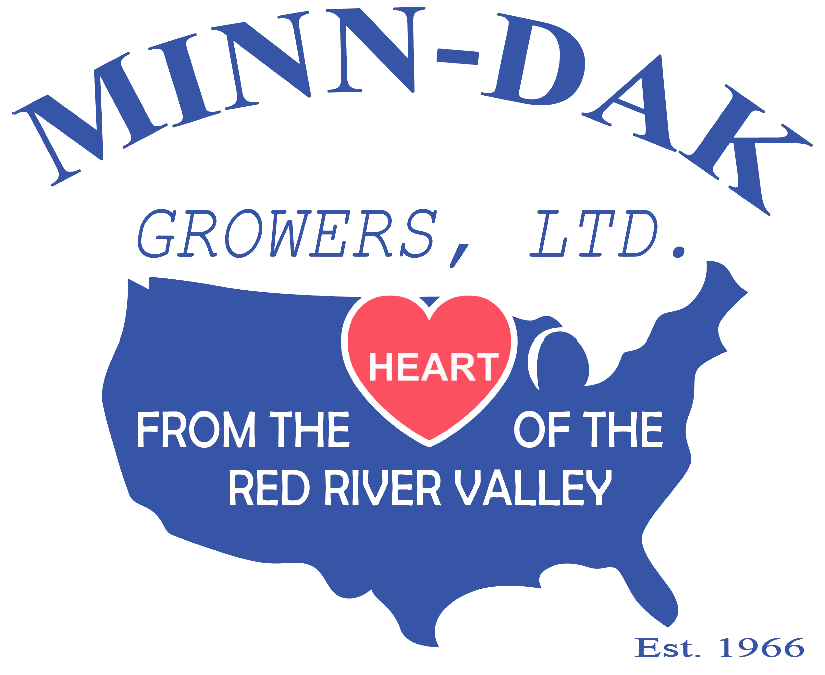Crop Consulting
Successful farming means keeping a close eye on what’s going on in the fields. Field information data adds to your knowledge and your management decisions. Early identification of potential problems, such as disease, insects infestations, nutrient deficiencies help effective and cost-efficient solutions. Growers must rely on people who can stay abreast of the latest production techniques. Minn-Dak agronomists do more than walk the field and offer advice. Agronomists deliver a special expertise critical to effective farm management. Highly specialized agronomists couple their expertise in crop management with knowledge of their customers’ circumstances and needs. Minn-Dak crop consulting services help growers develop the most effective and cost-efficient management plan for all aspects of agriculture.
Contact your Minn-Dak agronomists for more more information and how we can help you find the right solutions for your farm!
Contract Acreages
- Contract acreages include buckwheat, mustard, and safflower.
- Growers are informed during January/February after setting the contract price for each crop.
- Conduct regional meetings to educate interested specialty crop growers.
- Discuss contract procedures, marketing, and specialty crop production techniques in growers meetings
- Contract forms are made available at the grower’s meetings.
- Contract forms are also sent directly to growers on request.
Crop Production Guides
Buckwheat
CROP DEVELOPMENT: Emerges 5 to 7 days after planting. Begins flowering about 5 weeks after planting. Optimum seed set period is during weeks 5 - 7 after planting. Makes many flowers, but not all will set a seed. Wilts in hot weather, not
ROOTING DEPTH: 18 - 24 inches.
SOILS: Adapts to a wide range of soil types. Prefers medium
PLANTING RATE: 45 to 60 lbs/acre, 6 or
PLANTING DATE: May 25 to June 15. Planting up to July 1 has occurred in North Dakota, but yields are reduced. Buckwheat
PLANTING DEPTH: 1 to 2 inches.
FERTILITY: Nitrogen: 49 lbs of N per 1000 lbs. of yield goal (soil plus applied).
Phosphorous use is similar to wheat (use of
WEED CONTROL: No chemicals registered in U. S. Buckwheat is usually quite competitive.
CHEMICAL CARRYOVER: Sensitive to carryover of
ROTATION: Between small grains.
INSECTS: Aphids (usually not a big problem). Grasshoppers occasionally cause damage.
DISEASES: Subject to Rhizoctonia root rot (not reported often).
HARVEST: Swath when the top cluster of seeds
VARIETIES: Koto, Koma, and Green Testa
MARKET: Used in Japan for milling into flour. Flour is used in buckwheat (soba) noodles.
TYPICAL YIELDS: 1000 to 1500 lbs/acre. Yields up to 2000 lbs/acre reported. Depends upon the environment in a given region.
VARIABLE COSTS: $25.00 to $40.00/acre for seed, fertilizer, fuel, repairs, etc.
Oriental Mustard
CROP DEVELOPMENT: Emerges 7 to 10 days after planting. Well adapted to North Dakota. Flowering occurs 30 to 40 days after planting, and can occur for several weeks depending upon temperatures. Pods are long with many seeds. Matures in 90 to 95 days. Typical plant height is 36" to 48".
SOILS: Adapts well to many soils. Fertile, well drained soils are usually best.
PLANTING RATE: 4 to 6 lbs/acre. There are approximately 180,000 seeds/pound.
PLANTING DATE: mid-April to early May. Seedlings are frost tolerant.
SEEDING DEPTH: 0.5 to 1.0 inches
FERTILITY REQUIREMENTS: 65 lbs. of N per 1000 lbs. of yield. Similar to small grains in phosphorous use. Us of 10 to 15 lbs/acre of sulfur is highly suggested.
WEED CONTROL: Treflan is labeled for weed control.
CHEMICAL CARRYOVER: Sensitive to carryover of sulfonylureas (e. g. Glean, Ally), also sensitive to atrazine and picloram (Tordon).
ROTATION: Usually between small grains.
WATER USE: Fairly drought tolerant.
INSECTS: Flea beetles (not near as serious as in canola - usually not treated), cutworms.
DISEASES: Sclerotinia (white mold), downy mildew, alternaria. Most are of minor importance if sound rotation practices are followed.
HARVEST: Swath when crop is 95 to 100% ripe. Green seeds do not change color, and can result in grade discounts. Use a roller to prevent swaths from rolling in the wind. Harvest during cooler parts of the day to reduce shatter loss. Storage moisture is 9%.
MARKETS: Hot mustard sauces and condiments.
TYPICAL YIELDS: 1000 to 1500 lbs/acre. Yields of 2000 lbs/acre have been obtained in ND.
Safflower
CROP DEVELOPMENT: Emerges 1 to 3 weeks after planting. Well adapted to western North Dakota. Taproot can penetrate 8 to 10 feet in soil. Drought tolerant, frost tolerant in seedling stage (25 degrees F). Flowering occurs 30 to 40 days after emergence, and lasts for 14 to 21 days. 1 to 5 flower heads are typically formed on each plant, with 15 to 20 seeds per head. Thistle like plant. Matures in 100 - 105 days. Typical plant height is 28" to 36".
SOILS: Adapts well to many soils, best on fertile, well drained soils. Saline tolerance is similar to barley.
PLANTING RATE: 20 to 25 lbs/acre.
PLANTING DATE: April 15 to May 10. Late planting can result in crop not reaching maturity. Safflower is quite frost tolerant in the seedling stage.
SEEDING DEPTH: 1 to 1.5 inches
FERTILITY REQUIREMENTS: 50 lbs. of N per 1000 lbs. of yield. Similar to small grains in phosphorous use. A starter fertilizer containing phosphorous is recommended.
WEED CONTROL: Treflan, Eptam, and Dual are labeled for weed control in ND (1996). Poor competitor. Clean fields are essential.
ROTATION: Usually between small grains.
WATER USE: Fairly drought tolerant.
INSECTS: Grasshoppers.
DISEASES: Sclerotinia (white mold), botrytis, alternaria. Diseases are a problem under moist, humid conditions. Some varieties have disease resistance.
HARVEST: Straight combining is by far preferred. Swaths roll very easily. Harvest as soon as it is ready to avoid sprout damage from fall rains. Storage moisture is 8%.
MARKETS: Bird food, cooking oil.
VARIETIES: Numerous. Finch and S-208 are the main bird food varieties.
TYPICAL YIELDS: 1000 to 1500 lbs/acre.
Yellow Mustard
CROP DEVELOPMENT: Emerges 7 to 10 days after planting. Well adapted to North Dakota. Flowering occurs 30 to 40 days after planting, and can occur for several weeks depending upon temperatures. From 2 to 6 seeds can be found in a given pod. Matures in 90 to 95 days. Typical plant height is 30" to 40".
SOILS: Adapts well to many soils. Fertile, well drained soils are usually best.
PLANTING RATE: 10 to 14 lbs/acre.
PLANTING DATE: mid-April to early May. Seedlings are frost tolerant.
SEEDING DEPTH: 0.5 to 1.5 inches
FERTILITY REQUIREMENTS: 65 lbs. of N per 1000 lbs. of yield. Similar to small grains in phosphorous use. Use of 10 to 15 lbs/acre of sulfur is highly suggested.
WEED CONTROL: Treflan is labeled for weed control.
CHEMICAL CARRYOVER: Sensitive to carryover of sulfonylureas (e. g. Glean, Ally), also sensitive to atrazine and picloram (Tordon).
ROTATION: Usually between small grains.
WATER USE: Fairly drought tolerant. Rooting depth similar to small grains.
INSECTS: Flea beetles (not near as serious as in canola - usually not treated), cutworms.
DISEASES: Sclerotinia (white mold), downy mildew, alternaria. Most are of minor importance if sound rotation practices are followed.
HARVEST: Straight combining is preferred. Harvest when crop is 100% ripe. Green seeds do not change color, and result in grade discounts. Harvest during cooler parts of the day to reduce shatter loss. Storage moisture is 9%.
MARKETS: Table (hot dog) mustard, used also as a binding agent in processed meats.
TYPICAL YIELDS: 1000 to 1500 lbs/acre.
Minn-Dak Ag, LLC
4034 40th Ave. N.
P.O. Box 13276
Grand Forks, ND 58208-3276 USA

Contact Us
Phone: (701) 746-7453
Fax: (701) 780-9050
E-mail: info@minndak.com
Office and Receiving Hours:
7:30AM - 4:00PM M-F

